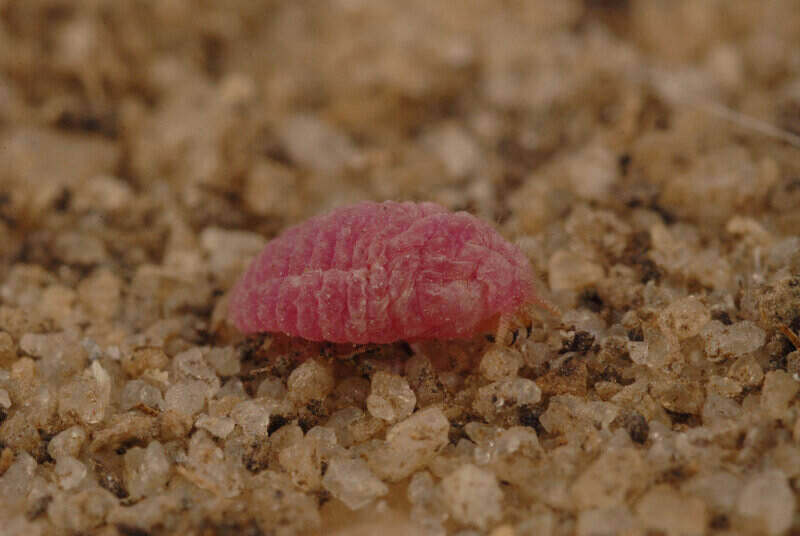
Pearls may be a girl’s best friend (we never cared for diamonds), but they are no friend of your lawn. Ground pearls are the immature state of an insect that will literally suck the juice from your grass roots. Since no one wants an underground nemesis munching on their grass, how do you get rid of ground pearls? We have a few tips and ideas on how to manage these insects and return your lawn to its former glory.
What are ground pearls?
Ground pearls are a type of scale insect that munch on warm-season grass root systems in the southern and southwestern parts of the U.S.
Ground pearl life cycle
In early summer, the female ground pearl lays her eggs. The nymphs, or immature ground pearls, emerge from their eggs around mid-summer. After the summer season, nymphs overwinter as small cysts or “pearls” (yes, they look just like the gem) and emerge in the spring to take on their adult forms.
Note: If conditions aren’t ideal, nymphs may not emerge as adults in the spring. (Scientists don’t yet understand the ideal soil temperature and moisture requirement for spring emergence.) They may stay in the nymphal stage for several years before coming into adulthood and producing the next generation.
Feeding behavior
Shortly after the nymphs emerge in mid-summer, they start to feed on the juice of grass roots. This feeding behavior causes irregular circular patches of yellow grass that are most noticeable during short periods of dry weather. The grass will eventually turn brown and die by fall.
Size
Ground pearl nymphs and adult females are about 1/16 inch long. Adult males are slightly smaller than females.

Appearance
Females are a bright “hot pink” color. Males are gnat-like in appearance. Nymphs (immature ground pearls) excrete a covering that envelopes their entire body (except their mouth). This wax-like coating ranges in color from pink to a yellow-brown color, looks like a pearl or fertilizer pellet, and is what you’re likely to see if you dig into the lawn.
How to identify ground pearls in your lawn
Follow these tips to find and identify ground pearls in your lawn:
- Go to the turf that is yellowing or brown (on the boundary between healthy and infested grass)
- Dig down to between 6-10 inches deep
- Look on the roots of the grass to find the tiny pearls
Here’s a helpful video from the University of Florida on how to find these insects in an infested lawn:
What do ground pearls eat?
Ground pearls primarily eat grasses. Some of their favorite turf grasses include:
If you have a warm-season lawn, you could be at risk. However, of all the warm-season grasses, centipedegrass seems to be the most likely to become infested. Bahiagrass, bermudagrass, and carpetgrass seem to be less susceptible to these insects.
North Carolina State University adds that “El Toro” Zoysia and vigorous grasses such as “Celebration”’ bermuda hold up well against damage from these insect pests. Caveat: NCSU notes that resistant grasses perform better in areas with heavy soils than in areas with sandy soils.
How to get rid of ground pearls
Ground pearls are one of the rare pests for which there are few treatment options. There are no chemical controls or insecticides that have proven to reduce populations significantly, nor are there biological controls that have been developed.
There may be one method that shows promise, according to a 2015 news report. One company in North Carolina uses a steam injection method that has proven successful in reducing ground pearls in home lawns. If you’re of an engineering ilk, you may be able to test this out yourself or see if there’s a local company that provides this innovative service.
Otherwise, the best way to manage ground pearl damage is to reduce the stress on your lawn. If you’ve already fertilized and watered well, here are a few other ways to minimize the effect on your lawn:
- Plant a grass that is resistant to ground pearls (see “What do ground pearls eat?”).
- Opt for alternatives, such as a few mulched ornamental garden beds.
- Don’t move soil from the area, and clean your shovels, trowels, etc., after use in an infested area.
Note: If you plant new grass, these insects will continue to feed on your lawn; although, with a more resistant grass, you may not notice the damage as much. Reach out to your local Extension Office. These local lawn, garden, and entomology experts can help you determine the best way to manage the damage and have a beautiful landscape at your home.
How to prevent ground pearl damage
If you don’t yet have a problem with these subterranean vampires that suck the life out of your turfgrass roots, here are a few ways to avoid them:
- Before you install sod, make sure there are no small, pearl-like insects attached to the roots.
- Cultivate a healthy lawn: Strong lawns show less ground pearl damage, even if they are heavily infested. Fertilize and irrigate appropriately for your grass and soil type. If you have clay or heavy soil, aerate your lawn annually and mow at the correct height for your warm-season grass type.
Word to the Wise: North Carolina State University notes that there may be a correlation between ground pearls and acidic soils. Ask your local Extension Office if they’ve noticed this relationship between soil and pest in your area.
If you want to make sure ground pearls are the issue or want someone else to strengthen your lawn, contact one of Lawn Love’s lawn care experts. They’ll help diagnose the problem and get your lawn on the road to recovery.
Main photo credit: James Castner | University of Florida Entomology & Nematology Department